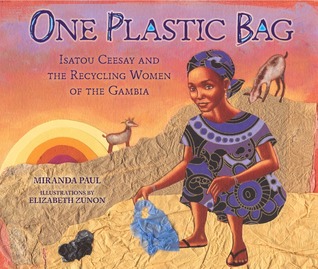We had a wonderful meeting this week, accompanied by several Russian-themed noshes for us to savor as we talked. We could not heap enough accolades on Candace Fleming's The Family Romanov. From the opening pages with the map of early twentieth-century Russia, the family tree showing (a lot of) inbreeding, including Hemophilia carriers, the excellent collection of photos, and the first-person narratives from people who were actually there, to the 99-item bibliography including primary and general sources, we agreed that this book was a definite tour-de-force. We all agreed that the writing almost made it seem like a novel -- and a love story at that -- and that the moving between the tsar's life with his family in the various palaces and what was going on with the 'real people' in Russia at the same time was beautifully done. We were astounded by Fleming's research, and all but two of us loved the first-person accounts that were placed throughout as incidents unraveled. One of our members felt that perhaps Fleming could have gone into greater depth about what happened after the Revolution, because it seemed that there weren't that many actual changes in the lives of the common people. But we ultimately agreed that The Romanovs were the focus, and to get too much into politics would have spoiled that focus. All in all, we found it to be an ultimately fascinating book, and we gave it a unanimous (and rare for us!) grade of 'A'.
We had mixed feelings on the picture book One Plastic Bag by Miranda Paul. We all agreed that it was a useful book for young kids: an easily accessible story about the importance of recycling and cleaning up one's environment and how one person can make a difference. We had some problems with the writing, although one of our members felt it was perfect and quite poetic. We thought there were some awkward transitions as the story progressed, and some things that didn't quite flow smoothly as Isatou Ceesay and the women of her village began to crochet little purses from the discarded plastic bags that inundated their landscape. We loved some of the illustrations, but not all of them. We felt that the difference between the very flat collage of the women's dresses clashed with the almost photographic portrayal of the women themselves and was at times jarring. We thought this might be a typical type of Gambian folk art, but it didn't resonate with everyone. Although it didn't receive an 'A' we were all glad we had read it, and we were glad to know that the women continue to create and sell the purses which has created an important income flow and benefit to their community, including a library!
WELCOME
WELCOME! For the last 19 years, about once a month, usually on a Thursday evening, a group of writers, illustrators, teachers and librarians meets in the Los Feliz area of Los Angeles to discuss children's books. Lately we have started meeting at lunch time, once every three months. Usually we talk about one picture book and one middle grade or YA novel. After the meeting, Sandy Schuckett, a retired LAUSD librarian, summarizes our discussion. Here are her reports of our thoughts about the books we have read. We'd love to have your comments too!
Thanks to Nancy Hayashi for our wonderful title art! NOTE: We are changing to a new schedule. Our meetings will now be quarterly and during the afternoon. Our group has been meeting since 2007. It was organized under the auspices of the Children's Literature Council of Southern California (CLCSC).
Thanks to Nancy Hayashi for our wonderful title art! NOTE: We are changing to a new schedule. Our meetings will now be quarterly and during the afternoon. Our group has been meeting since 2007. It was organized under the auspices of the Children's Literature Council of Southern California (CLCSC).
Subscribe to:
Post Comments (Atom)


No comments:
Post a Comment